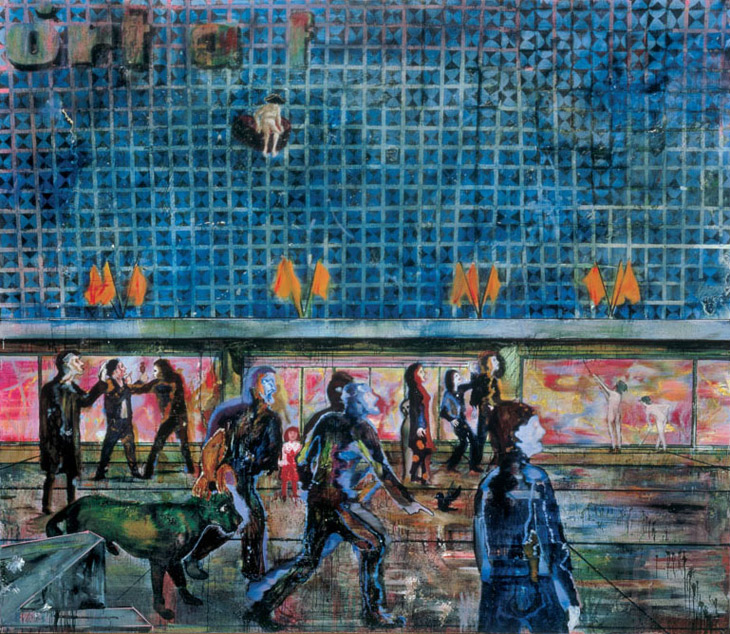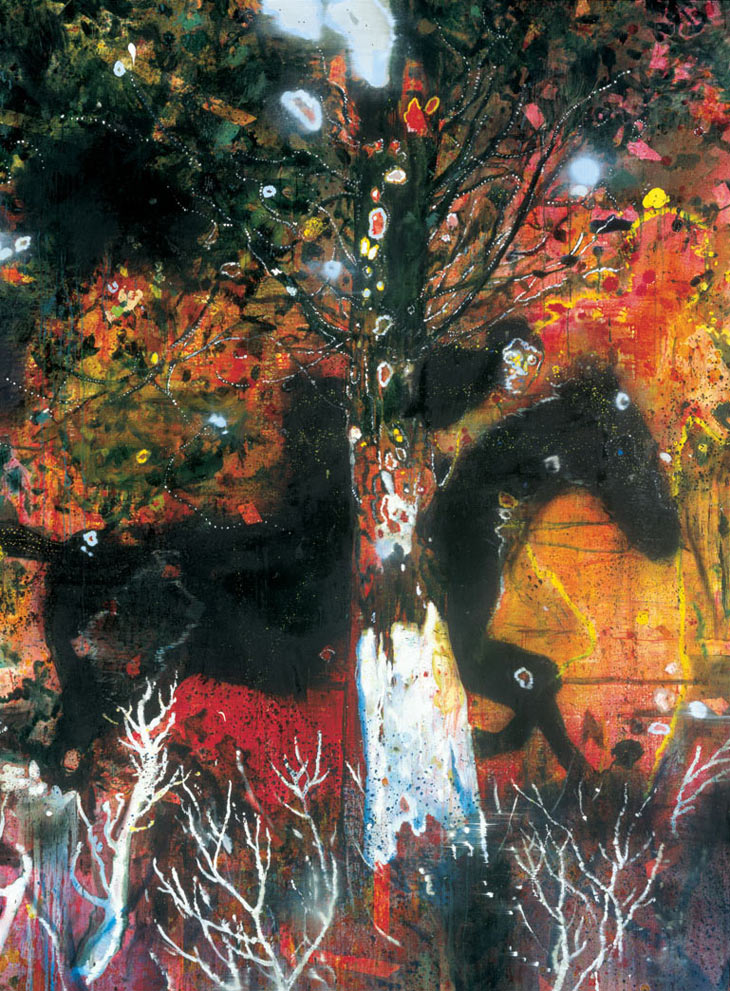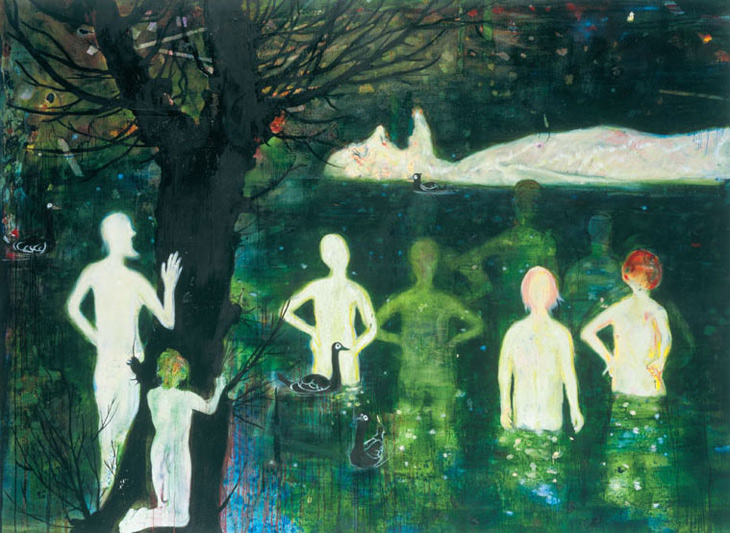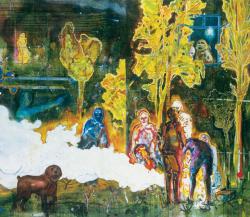




ARTIST:
Daniel Richter
Daniel Richter’s work subverts the genre of epic historical painting. Often working from media images, his large-scale paintings reconstitute current events as timeless fables, spinning the anxiety of contemporary zeitgeist into overwhelming tableaux of allegorical fantasy. In Gedion, Richter paints a crowd of people outside a stadium. The figures are given a ghost-like presence, radiating with a supernatural aura. The carnival-esque atmosphere is infused with a malefic tension; a boozy Saturday night reconstituted as imperious myth. In the background, naked figures tend to the building; their presence is reminiscent of cherubs in Renaissance religious painting.-->
Daniel Richter’s Jawohl und Gomorrah possesses an operatic quality. Borrowing themes from both Christianity and German history, Richter constructs his contemporary scene with theatrical flair: his figures are staged in Baroque composition, their outlandish costumes and mask-like faces lend an element of surreal spectacle. The fervent emotion of grand drama is carried through Richter’s frenetic style of painting: thick brushwork battles with translucent drizzles and impassioned smears; acid tones are electrified against the sombre ground. Reminiscent of Ensor’s nightmarish crowds, Richter infuses this street scene with apocalyptic celebration.
In Those who are here again, highly rendered paintwork provides an ebullient scene: a group of mysterious figures gathered round a fire, an urban residence illuminated in other-worldly glow. It’s ambiguous high drama that Richter does best: perhaps a scene of violence, vagrancy or simply a party, his paintings are infused with wonder, enigma and a silently creeping paranoia.
An array of magic lies in Richter’s Trevelfast. In a nightmarish scene, he paints a ghoulish rider desperate for escape from the unnatural powers of the night or the blazing red suggestion of fire. Richter handles paint with an unwieldy passion: every colour in his controlled chaos retains its purity. His paintings radiate with their own internal light, bringing his dreamy scenes of contemporary fable to life with timeless authority.
Richter uses paint on a canvas surface to conjure up illusions of time and space. Still has a certain Pre-Raphaelite quality, reminiscent of ghostly figures witnessing the drowning of Ophelia. Much like Doig, Richter gets to the heart of paint, capturing a magnetic vibrancy through texture, richness of colour and illusion of light. Richter designs an exuberant and luscious otherworld, made all the more believable by the invention of, and adherence to, his own rules of image-making.




